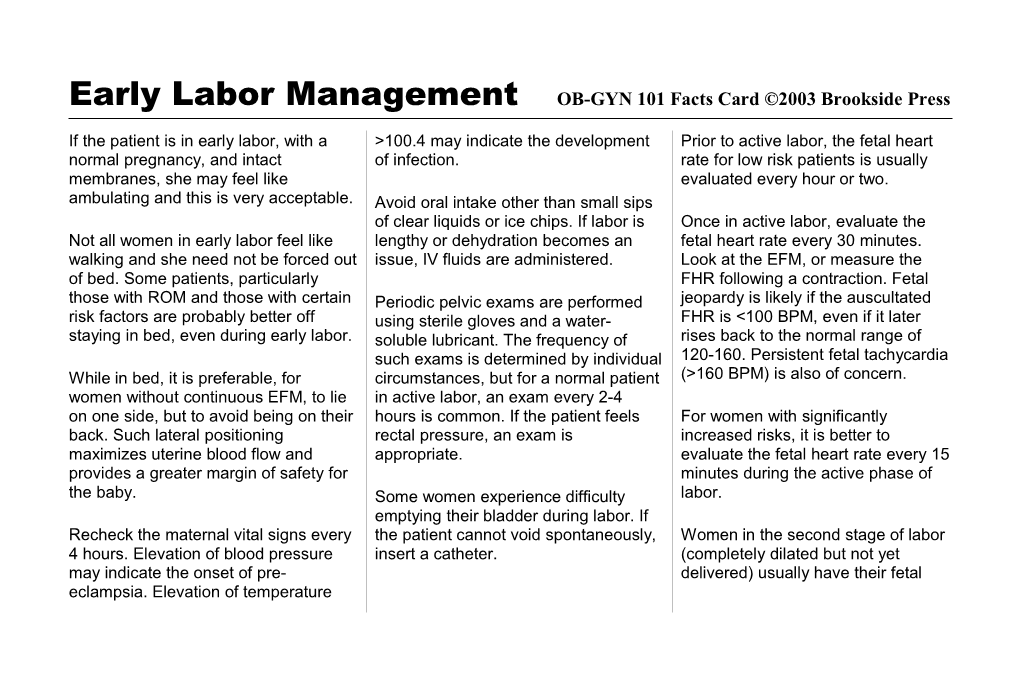Early Labor Management OB-GYN 101 Facts Card ©2003 Brookside Press
If the patient is in early labor, with a normal pregnancy, and intact membranes, she may feel like ambulating and this is very acceptable.
Not all women in early labor feel like walking and she need not be forced out of bed. Some patients, particularly those with ROM and those with certain risk factors are probably better off staying in bed, even during early labor.
While in bed, it is preferable, for women without continuous EFM, to lie on one side, but to avoid being on their back. Such lateral positioning maximizes uterine blood flow and provides a greater margin of safety for the baby.
Recheck the maternal vital signs every 4 hours. Elevation of blood pressure may indicate the onset of pre-eclampsia. Elevation of temperature >100.4 may indicate the development of infection.
Avoid oral intake other than small sips of clear liquids or ice chips. If labor is lengthy or dehydration becomes an issue, IV fluids are administered.
Periodic pelvic exams are performed using sterile gloves and a water-soluble lubricant. The frequency of such exams is determined by individual circumstances, but for a normal patient in active labor, an exam every 2-4 hours is common. If the patient feels rectal pressure, an exam is appropriate.
Some women experience difficulty emptying their bladder during labor. If the patient cannot void spontaneously, insert a catheter.
Prior to active labor, the fetal heart rate for low risk patients is usually evaluated every hour or two.
Once in active labor, evaluate the fetal heart rate every 30 minutes. Look at the EFM, or measure the FHR following a contraction. Fetal jeopardy is likely if the auscultated FHR is 100 BPM, even if it later rises back to the normal range of 120-160. Persistent fetal tachycardia (160 BPM) is also of concern.
For women with significantly increased risks, it is better to evaluate the fetal heart rate every 15 minutes during the active phase of labor.
Women in the second stage of labor (completely dilated but not yet delivered) usually have their fetal heart rate evaluated every 5 minutes until delivery.
